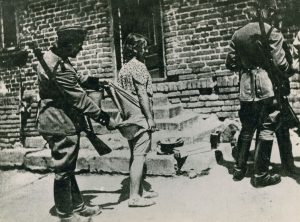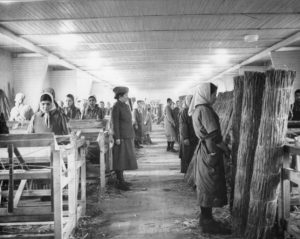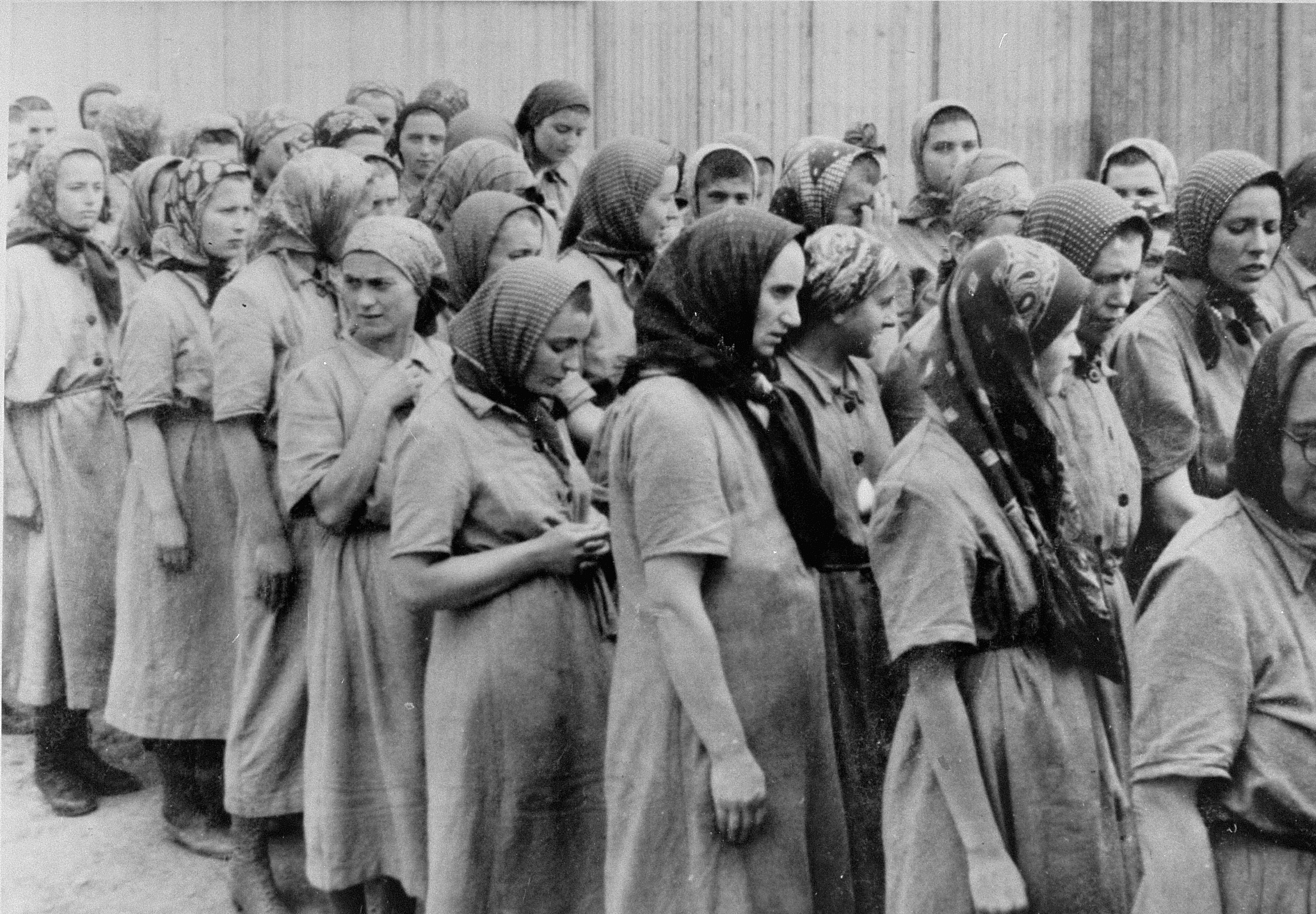Part 4B: Women’s Camps and Brothels

An armed Nazi soldier searches a woman by pulling down her underwear, Poland, circa 1939-1944. Photo credit: USHMM #73719, courtesy of Moshe Berry
Separate camps and compounds were set up exclusively for female prisoners who were considered strong enough for labor projects and menial chores. The largest women’s camp was Ravensbrück (near Berlin), where nearly 120,000 women from across Europe were sent. An estimated 50,000 women died there between 1939 and 1945. A special women’s section was also created in Auschwitz-Birkenau, where 34,000 women died between 1942 and 1943.

Female Romani forced laborers stand at attention during an inspection of the weaving mill in the Ravensbrück concentration camp in Germany, circa 1943. Photo credit: USHMM, Bildarchiv Preussischer Kulturbesitz
The Nazis established more than 500 brothels across occupied Europe, including in concentration and extermination camps. More than 34,000 girls and women were trafficked and raped at these sites, mostly by German soldiers and Nazi police. The brothels also served as a “reward” for forced laborers and prison leaders, as well as a cruel mechanism to attempt to “cure” gay men, who were forced to make compulsory visits. Such gender-based violence and dehumanization occurred at every level of the Nazi camp system, with female inmates being subjected to frequent strip searches as well as forced abortions and sterilization.
